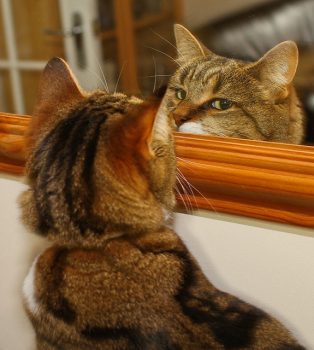Verbs in the Mirror Posted by Bjørn A. Bojesen on Jan 31, 2017 in Grammar
Drømte mig en drøm i nat… (Dreamt myself a dream tonight…) One of the oldest songs in the Danish language (click here to listen to it) starts with a reflexive verb. Since there is a difference between I wash myself and I wash the dog, speakers of many languages found a way to refer back to … themselves. A reflexive verb in Danish is used with the corresponding reflexive pronoun – for example at hygge sig (to enjoy oneself, to have a good time, to be a part of the Danish hygge):
jeg hygger mig – vi hygger os
du hygger dig – I hygger jer
han, hun, man, den/det hygger sig – de hygger sig
Note that sig corresponds to either himself, herself, oneself, itself or themselves in English.
Some of these verbs are used both with and without the reflexive pronoun: Jeg vasker mig. Jeg vasker hunden. Many of them, however, are reflexive 99% of the time, and may even change their meaning if you forget the extra pronoun – be ware! Han rejser sig (He gets up) isn’t the same as Han rejser (He’s travelling). A few verbs are always reflexive, such as at skutte sig (to shake oneself). Here are some very common Danish reflexive verbs:
at skynde sig – to hurry
at glæde sig – to look forward to
at kede sig – to be bored
at sætte sig – to sit down
at koncentrere sig – to focus
at gifte sig – to marry
at forelske sig – to fall in love
at blære sig – to show off
at pynte sig – to adorn oneself
at skamme sig – to be ashamed
at øve sig – to practice
at slanke sig – to slim, to get slimmer
at ønske sig – to wish
at more sig – to have fun
at vænne sig – to get used to
at blande sig – to meddle (bland dig uden om! mend your own business!)
at interessere sig for – to be interested in
at beslutte sig – to make up one’s mind
…

Build vocabulary, practice pronunciation, and more with Transparent Language Online. Available anytime, anywhere, on any device.




